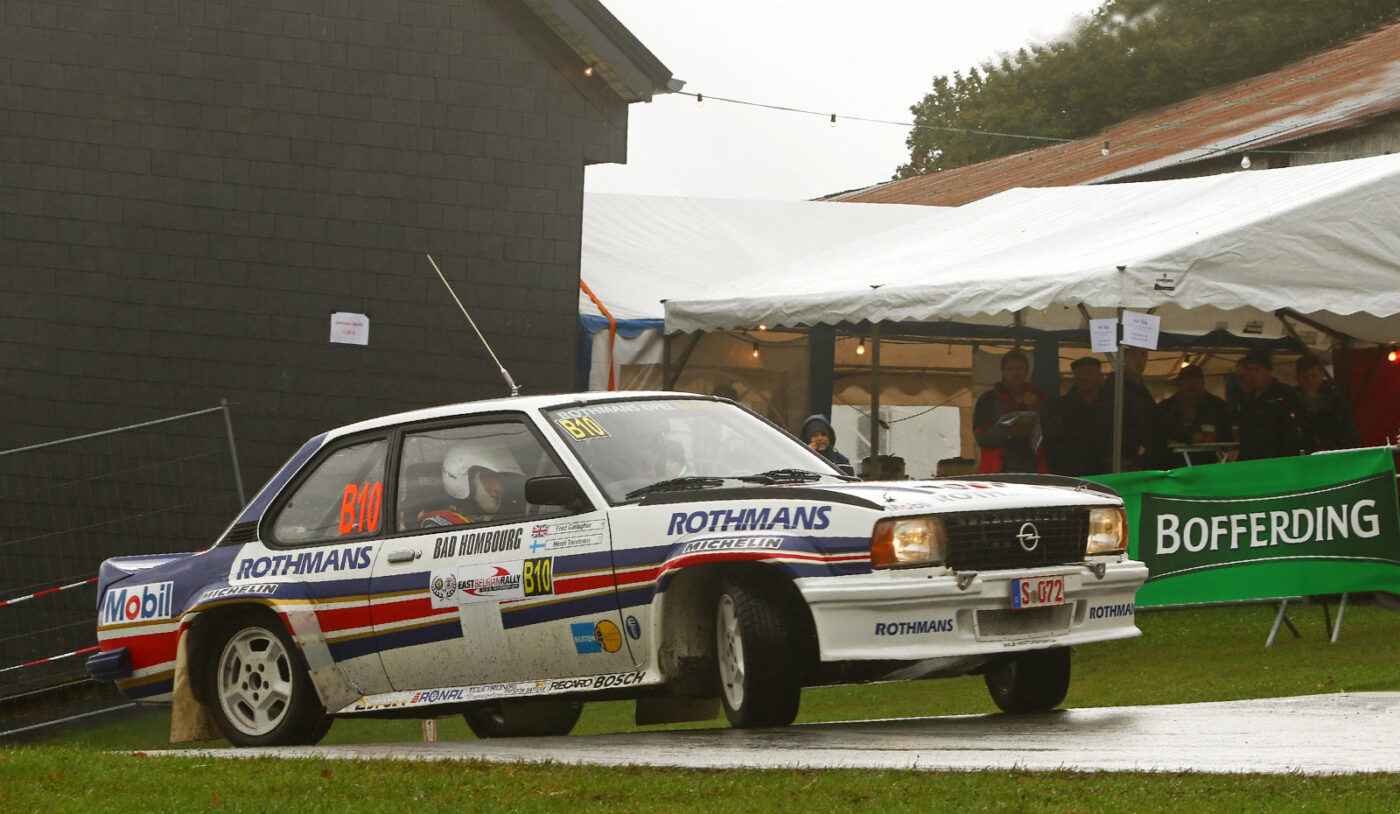
Opel released the Ascona 400 as a homologation special for rallies in September 1979 at the IAA fair in Frankfurt. The name is based on the required quantity of 400 built cars, which was a prerequisite for homologation in Group 4. Homologation was granted with No. 666 on November 1st, 1979, while homologation for Group B was given on November 1st, 1982 with No. B221.
This car is the third to last of 36 works cars and bears the internal Matter number RA 48. The vehicle was named “Gringo” by the mechanics, and entered by the Opel Rothmans Rally Team in Rüsselsheim, Germany. First event was Rally San Remo in Italy from October 3rd to October 9th, 1982 with starting number 3 and license plate GG-CK 188. The vehicle placed in 3rd overall with Walter Röhrl at the wheel and co-driver Christian Geistdörfer. The car thereby contributed to the 2nd world rally championship title of Walter Röhrl. Next event was the Rallye Monte-Carlo from January 22nd to January 28th, 1983 with Henri Toivonen / Fred Gallagher, starting no. 6, license plate GG-CK 217. Finally, they achieved a 6th place overall with 3 best times.
Last factory team event was Sweden Rally from February 11th to 13th, 1983; once more with license plate GG-CK 217 and 6th place overall, but this time with starting nr. 2 and works drivers Ari Vatanen / Terry Harryman and called “Bomber” by the mechanics.
Since the successor to the vehicle, known as Opel Manta 400, was just around the corner, the vehicle was registered by Hainbach Motorsport with the German license plate VB-H 481 and sold to Elfinco in Greece. Elfinco is the acronym of Hellenic Financial Company, which was the Greek importer of Opel for decades. During this time, Opel had the highest market share of all car brands in Greece. Johnny Pesmazoglou was the owner of Elfinco, a regular participant in the Acropolis Rally, and overall winner in 1952 and 1955.
Pesmazoglou first entered the car into the Acropolis Rally 1983, where he unfortunately did not finish. The Halkidiki Rally 1983 ended with a similar unpleasant result.
The 1984 season commenced nicely and ultimately led to an overall victory at Giros Peloponnisou. The car was also entered to the Attiko Rally, the WRC Acropolis Rally where it placed 19th overall, and the ERC Halkidiki Rally with a 10th place finish. In 1985, only two events were contested: the Rally Acropolis (21st overall) and the Halkidiki Rally (16th overall). In 1986, there were only three starts: the Earino Rally (12th), the Acropolis Rally where the vehicle did not finish due to electrical issues, and the Halkidiki Rally where the vehicle also did not finish. Last event for the Opel Ascona 400 in Greece was the Halkidiki Rally in 1987, which also ended with retirement.
Thereafter, the vehicle was stored at Elfinco. The British car dealer Jason Lepley bought it in 2015 and used it for demonstration runs like the 2015 and 2016 Goodwood Festival of Speed with Ari Vatanen. It was also deployed at Rallyday in Castle Combe 2017.
In August 2018 the car was sold back to Germany, where it was built.
Technical data:
Body shell: Construction by Matter
Engine: 4 cylinders in line with 16 valves, phase 3
Output: 272 PS (200 kW) at 7.000 rpm
Displacement: 2,420 cm³
Bore/stroke: 95,2 x 85 mm
Carburetors: Weber 50 dual carburetors
Oil supply: dry sump lubrication
Tank capacity: 80 liters in the boot
Gear box: Getrag 5-speed-racing gear box, 2.33 – 1.00 ratio
Drive line: rear wheel drive, limited slip differential
Brakes: 4 discs with AP Lockheed calipers with 4 pistons
Tires: Michelin
Rims: on the front max 8J x 15, on the rear max 10J x 15
Kerb weight: 1,050 kg without drivers and fuel
Dimensions: length 4,320 mm, width 1.760 mm